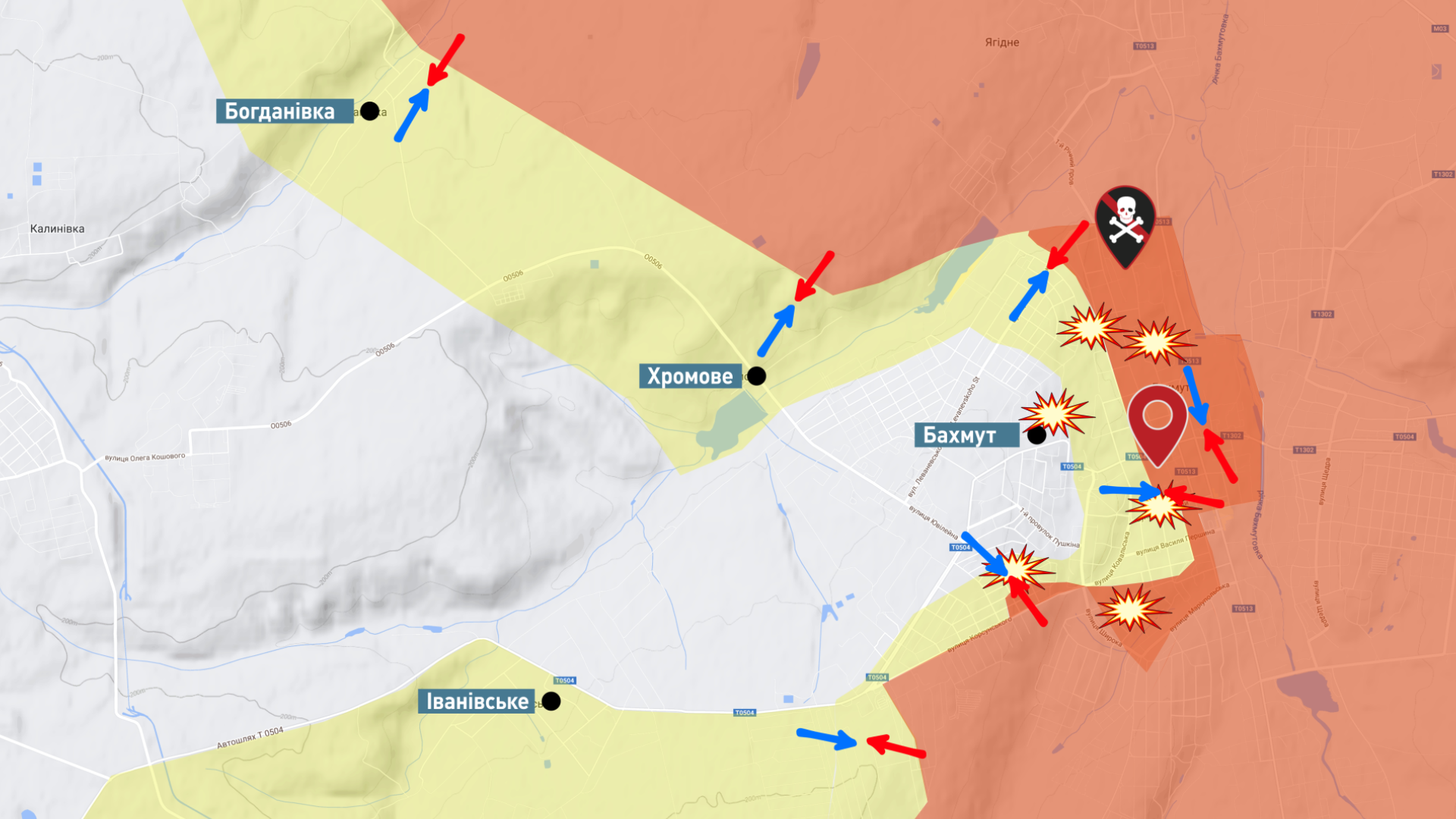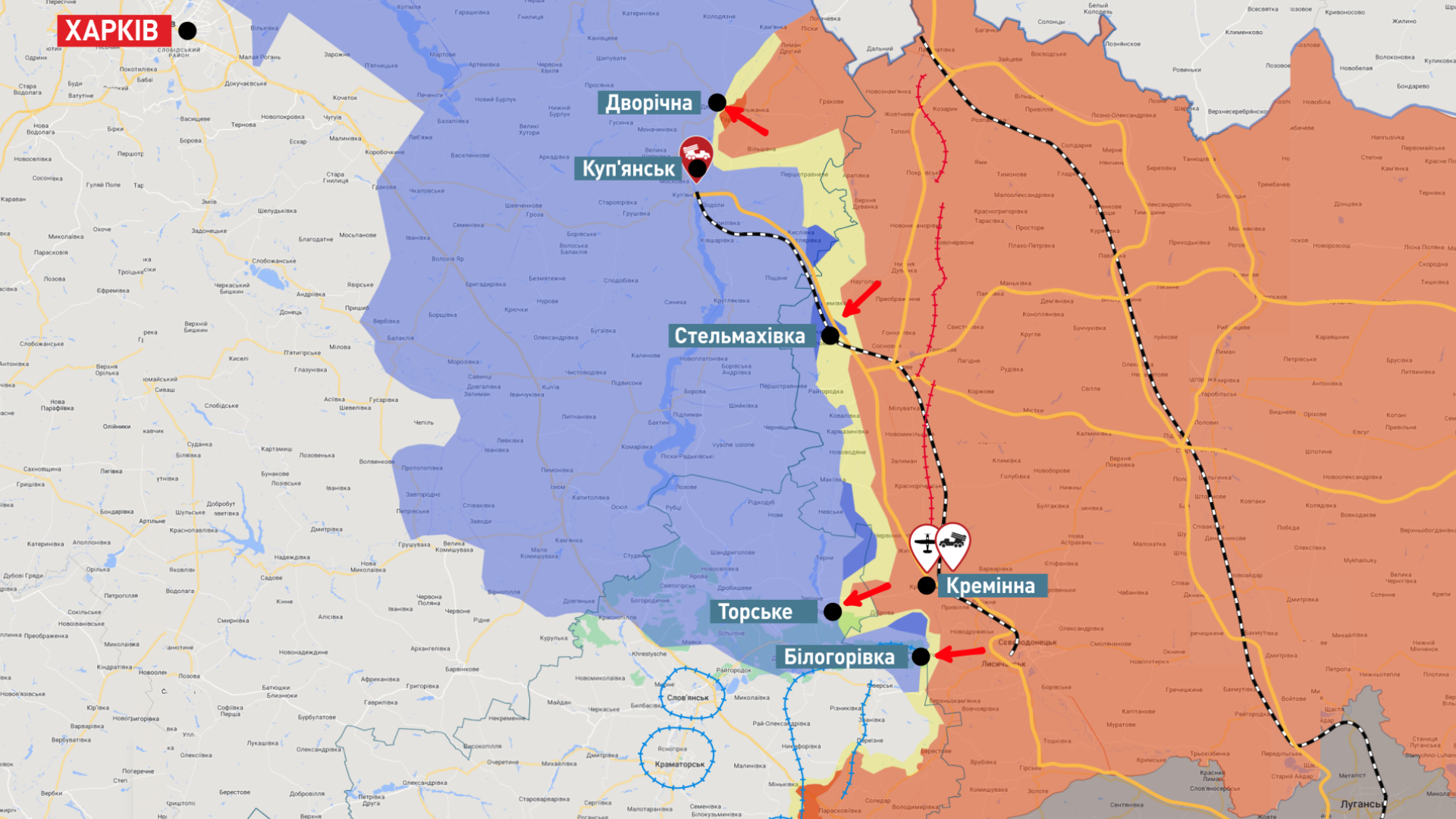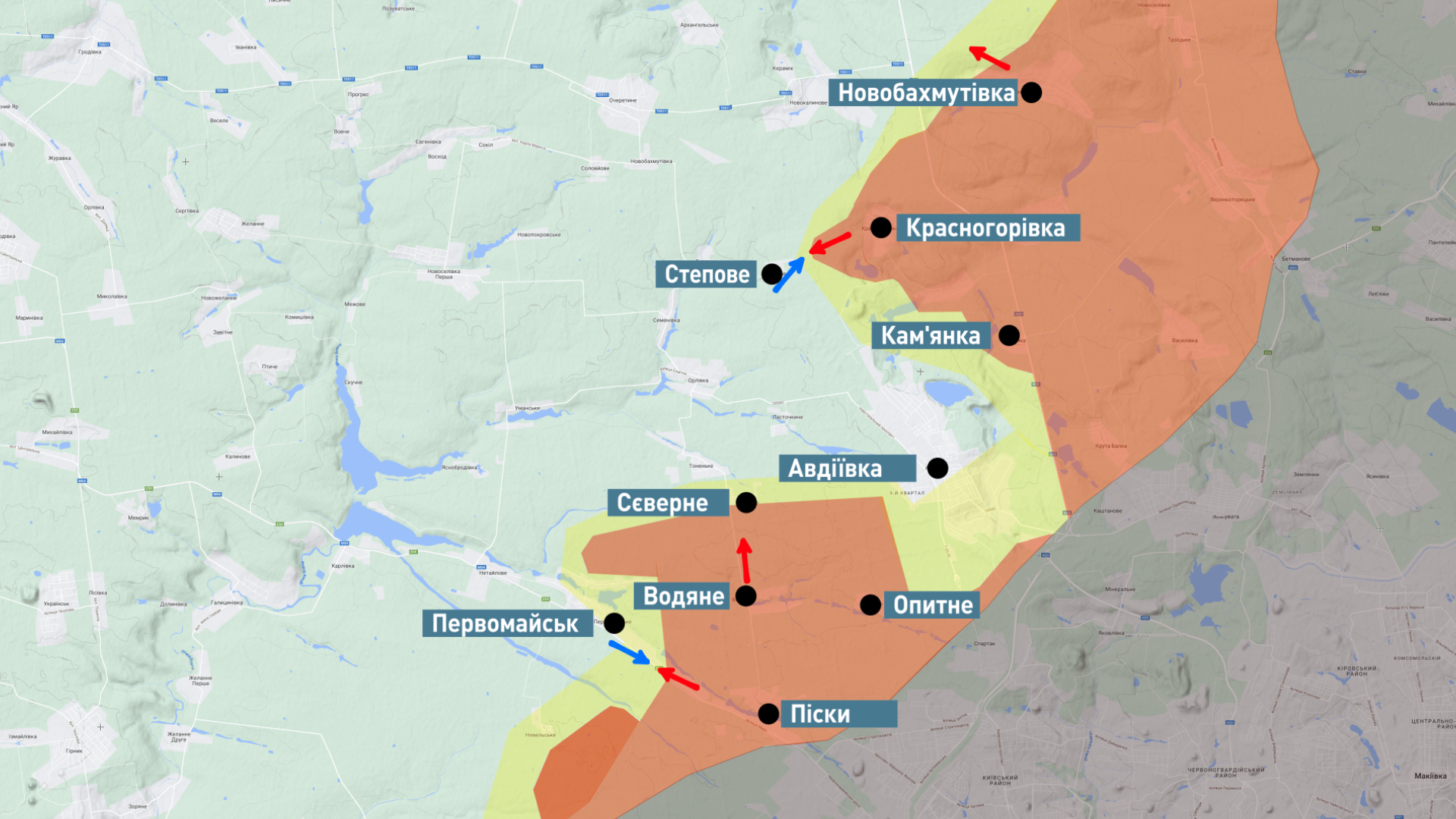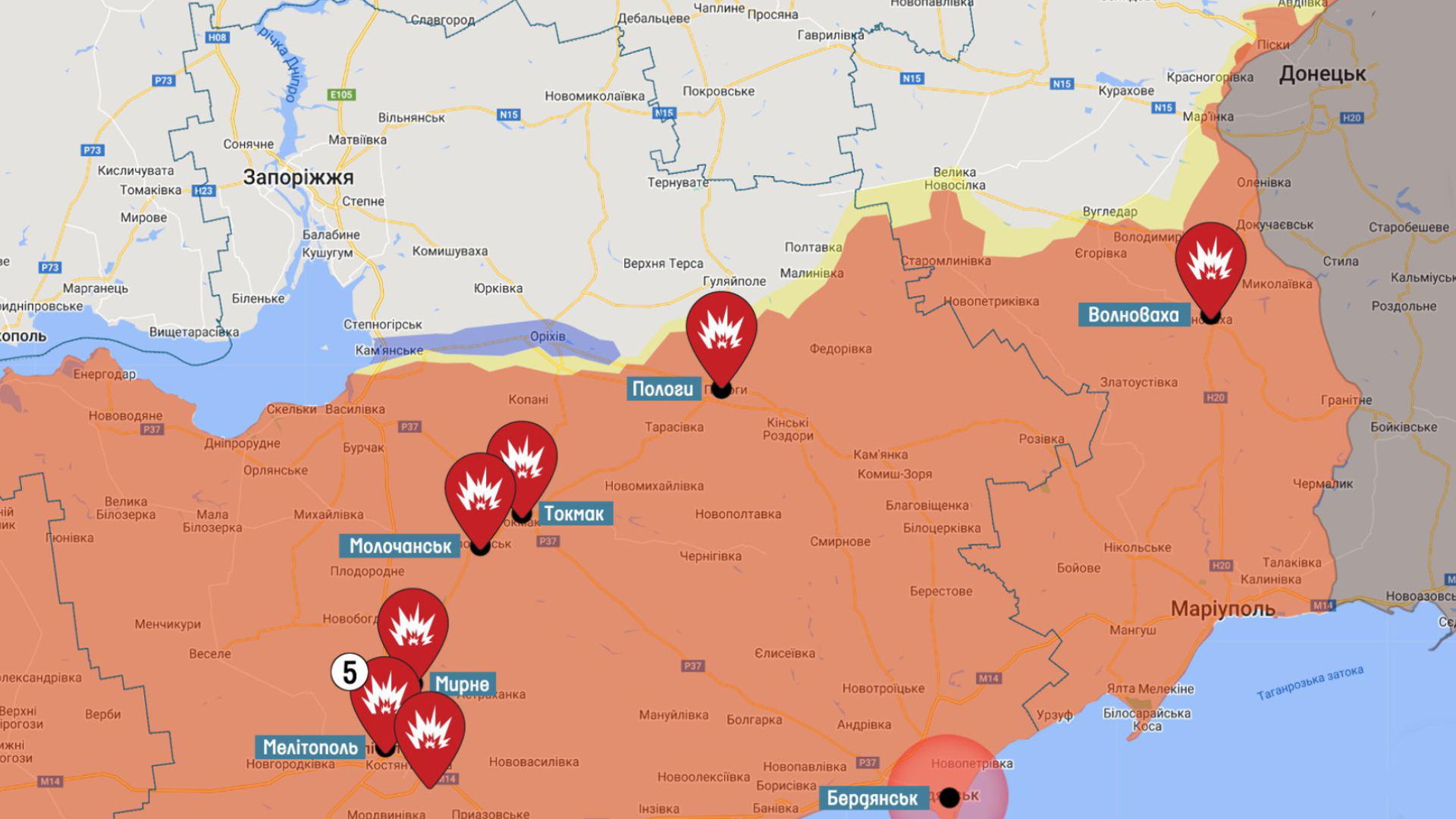
Russia should not predict main direction of counteroffensive before it begins: weekly military results
The main challenge for the Ukrainian General Staff is to plan a counteroffensive so that the Russian enemy is weakened everywhere and does not know where the main attack will be
Ukrainian military analyst, CEO of Defense Express military expert group, Serhiy Zgurets has shared his point of view on Ukraine’s counteroffensive and the latest assessment of the frontline situation.
The information curtain on the Ukrainian counteroffensive should distract Russia's attention
When we talk about the NYT article on the counteroffensive, there are some nuances that deserve attention. They refer to the documents following a meeting with General Mark Milley and the commander of NATO's forces in Europe in early March, where they discussed Ukraine's plans of action. The slides, which are available online, describe how Ukrainian 12 brigades are being formed for the offensive. It was written there that 9 brigades were already being prepared, six of them were ready at the end of March, and three more at the end of April. Weapons were assigned to each brigade and the timeframe for training was determined. This information is partly sensitive, but it does not affect the preparation for a counteroffensive. I believe this is part of the internal American game rather than an accusation against Ukraine. I believe that it will continue, it will not affect the offensive, and the American side will draw conclusions with certain results in this story. I think the game is multifaceted and a number of nuances will emerge that will allow us to draw more objective conclusions.
I am sure that more information about the counteroffensive will appear, and this is good. This is an information curtain that is meant to distract the Russians so that they cannot draw any correct conclusions. And the offensive will come when it is needed.
The importance of the Bakhmut defense will become clear during the counteroffensive
The situation in recent weeks seems to have decreased in intensity and number of attacks. This indicates either exhaustion or other plans that Russia is trying to implement.
Zelenskyy said that if the dynamics in Bakhmut and around the city are so dangerous that it endangers the lives of Ukraine's soldiers, the generals will decide to withdraw from the city. And it will be the right decision. The Russian forces are trying to advance from the east, but they are stuck in two areas. The fighting is going on in the central part, but the line is no longer on the Bakhmutka River, but on the railroad that crosses the city from north to south. There are high-rises behind it. The Russians control the area in front of the railroad and between it and the river. The Ukrainian control of the high-rise buildings and the height allows us to destroy the occupiers. The Russian enemy is trying to use aviation. On the flanks, the enemy's efforts are weakening, Prigozhin complains. He says that the flanks need to be strengthened, that there is a change in leadership and a lack of ammunition. All these factors negatively affect the effectiveness of the Russians, but the inertia of offensive actions remains. The Ukrainian side should take this into account. Ukraine is focusing its main efforts on the flanks through counteroffensive actions and providing logistical routes for defensive actions.

One of the tasks of Bakhmut is to restrain Russian forces. Airborne troops have also begun to be deployed here. It is important that they are here and not in other areas. The offensive is not launched by the forces that are engaged in defense, but by new forces that are being trained for it. We will understand the significance of the Bakhmut defense amid counteroffensive actions and see if we have enough forces for other areas. We have experience in long-term urban defense, and we have options for integrated defense, when long-term defense in one city ensures the success of an offensive in other cities.
Luhansk region: Russian troops want to push back Ukrainian army, but fear a breakthrough by the Defense Forces
There is one important detail: Russia has more troops in the area of Kreminna than in the areas of Bakhmut and Avdiivka. This suggests that the accumulated forces have the potential to push the Ukrainian Armed Forces back toward Torske and beyond. In general, to move Ukrainian troops away from Kupiansk and along the Zherebets River in order to free the front along the road from Kupiansk to Kreminna. The Russian army has had this idea for a long time, but despite the saturation of forces, there have been no changes in the front line, although the fighting is intense.

The Svatove-Kreminna-Kupiansk frontline is held by one grouping of Russian troops, and around Bakhmut by another. They have different commanders and there is very little interaction on the flanks between them. This makes it possible to exploit this weakness by the Ukrainian Armed Forces, which provide a repulse in the area of Bilohorivka. The Russian troops are afraid of counteroffensive actions here, because the Ukrainian army may break through to the area of Severodonetsk and Lysychansk, where they can cut off the grouping that is currently in the area of Kreminna. This intrigue remains.
Avdiivka: Ukrainian counterattacks reduced the dynamics of the Russians
The direction of Avdiivka and Marinka is also quite dynamic. However, in recent days, the dynamics have decreased after significant counterattacks by the Ukrainian Armed Forces. The Russian troops attempt to move to Sievierne or Stepove to bypass Avdiivka. The counterattacks resulted in significant enemy losses. Secondly, the Russians do not have the potential to realize the plan to capture the city. Avdiivka will continue to be held, although at a certain stage there was a threat of Russians breaking through to the villages, which would make it difficult to provide the city with everything it needs. There is the village of Orlivka, which is a transportation hub. This week shows that there has been no advance by the Russian troops, which indicates that the Ukrainian Armed Forces have significant reserves of forces to disrupt the Russians' plans here.

Counteroffensive: there will be elements for which the Russian forces are not ready
Strikes by the Ukrainian Armed Forces behind the enemy lines. Some experts say this may be a sign of preparations for a counteroffensive. The destruction of weapons depots, control points, Russian counter-battery radars, and a radar station is a reflection of the AFU's approach on the right bank of the Kherson region, when the defense was softened for a long time. I think it has to do with this strategy. It will all be stretched out over time, and the enemy will not even notice where Ukraine's main counteroffensive will take place. This is the main challenge for the Ukrainian General Staff – to plan the operation so that the enemy is weakened everywhere, and they will not know where the main offensive is until the very beginning. The operation will have new components that the Russian forces will not be able to prepare for. Especially if it follows the template of the USSR army – the Ukrainian army does not fight according to a template.

If Russia does not negotiate, Ukrainian Defense Forces will liberate Crimea
Crimea is not a fortress, Crimea is a weak point in Russian defense, as evidenced by the previous practice of battles. The countries that defended it could not hold it. There are quite clear ways to block Russian troops there with the help of precision weapons. There are also all the prerequisites to exhaust the Russian troops in Crimea and make them flee from there. The military understands the achievability of the goal of liberating Crimea by military means. So do the Russians. Statements about possible negotiations on Crimea are based on the fact that if this does not happen, Ukraine will liberate it militarily. This is the only clear understanding by Ukraine and NATO countries. Without Crimea, we cannot talk about security in the Black Sea and the Sea of Azov regions, which should be under Ukrainian control.
- News













































